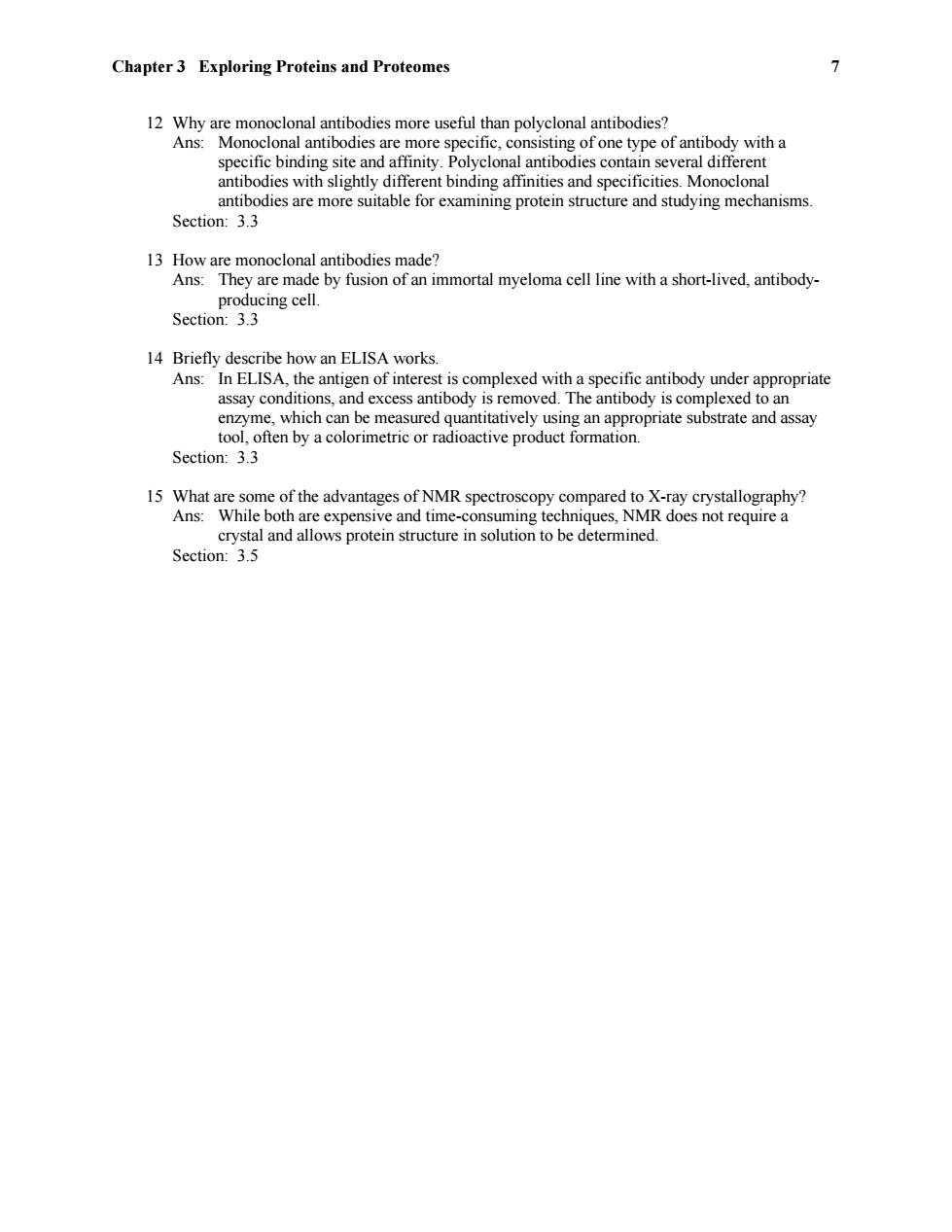正在加载图片...

Chapter 3 Exploring Proteins and Proteomes 7 12 Why are monoclonal antibodies more useful than polyclonal antibodies? Ans:Monoclonal antibodies are more specific,consisting of one type of antibody with a specific binding site and affinity.Polyclonal antibodies contain several different antibodies with slightly different binding affinities and specificities.Monoclonal antibodies are more suitable for examining protein structure and studying mechanisms. Section:3.3 13 How are monoclonal antibodies made? Ans:They are made by fusion of an immortal myeloma cell line with a short-lived,antibody- producing cell. Section:3.3 14 Briefly describe how an ELISA works. Ans:In ELISA,the antigen of interest is complexed with a specific antibody under appropriate assay conditions,and excess antibody is removed.The antibody is complexed to an enzyme,which can be measured quantitatively using an appropriate substrate and assay tool,often by a colorimetric or radioactive product formation. Section:3.3 15 What are some of the advantages of NMR spectroscopy compared to X-ray crystallography? Ans:While both are expensive and time-consuming techniques,NMR does not require a crystal and allows protein structure in solution to be determined. Section:3.5Chapter 3 Exploring Proteins and Proteomes 7 12 Why are monoclonal antibodies more useful than polyclonal antibodies? Ans: Monoclonal antibodies are more specific, consisting of one type of antibody with a specific binding site and affinity. Polyclonal antibodies contain several different antibodies with slightly different binding affinities and specificities. Monoclonal antibodies are more suitable for examining protein structure and studying mechanisms. Section: 3.3 13 How are monoclonal antibodies made? Ans: They are made by fusion of an immortal myeloma cell line with a short-lived, antibody- producing cell. Section: 3.3 14 Briefly describe how an ELISA works. Ans: In ELISA, the antigen of interest is complexed with a specific antibody under appropriate assay conditions, and excess antibody is removed. The antibody is complexed to an enzyme, which can be measured quantitatively using an appropriate substrate and assay tool, often by a colorimetric or radioactive product formation. Section: 3.3 15 What are some of the advantages of NMR spectroscopy compared to X-ray crystallography? Ans: While both are expensive and time-consuming techniques, NMR does not require a crystal and allows protein structure in solution to be determined. Section: 3.5